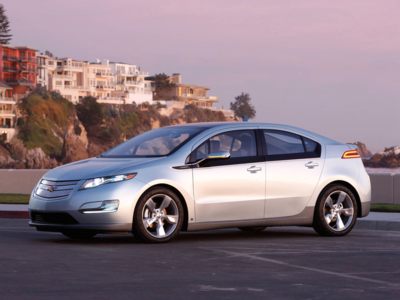Oct 28th, 2010 by Ross Edwards

The Chevrolet Volt plug-in hybrid does not qualify for the California $5,000 tax rebate for zero-emissions cars. According to the California Air Resources Board, the Chevrolet Volt is an ultra low emissions vehicle, which sounds great but is actually an average rating, given to 55% of all new vehicles, including the Jeep Grand Cherokee. In order to qualify for the $5,000 tax rebate, as well as preferential parking and the right to drive in HOV lanes without a passenger, the Volt would need to be a zero emissions vehicle.
There are currently only two vehicles on sale that qualify for the CARB zero emissions rating: the Nissan Leaf electric car and the Honda Civic GX, which is powered by natural gas.
The bad ranking for the Volt is due to CARB ratings ignoring the Volt’s ability to drive without using gasoline power. All tests were done without taking into consideration the Volt’s 25-50 miles of electric only power, according to Kicking Tires.
This is a huge blow to the Chevy Volt. It costs quite a bit more than the Nissan Leaf, which does qualify for HOV lane access and the $5,000 rebate. The Chevrolet Volt still qualifies for a $7,500 federal tax rebate.

I think the Volt could have qualified for the rebate, GM just ran out of time to tweak the car.
Volt lets you drive for at least 25 miles without spending any gas. You can drive 100 mph on the freeway, you still won’t spend a drop of gas. Not even the next gen Toyotas and Hondas can do that, they always use gas.
CARB didn’t know what to do with this, because they haven’t anticipated a car that works like that. I bet you it’ll get a rebate next year.
They tested the emissions when the engine is on, but that only happens once you run out of juice.
GM could have tweaked the engine more to get the SULEV sticker, but I think they just ran out of time, they wanted to get the Volt out of the door as soon as possible, to be first in the industry at least once. I bet you next year’s models are going to offer better economy and more range, that’s just the way high-tech works. By having thousands of people drive it sooner rather than later, they’ll learn so much more about what they need to do to make it into an even better car.